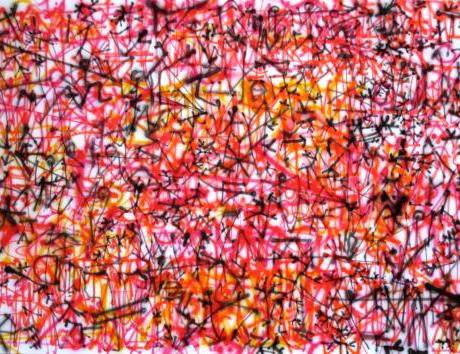Three exhibitions
dal 23/2/2013 al 29/6/2013
Segnalato da
23/2/2013
Three exhibitions
Gask Central Bohemia's museum of art, Kutna Hora
Michal Skapa's exhibition presents his entire range of variations on pixacao: sketches, posters, prints, and examples of individual codes and their digital modification. In his cycle Neomondrian Karel Stedry continues with traditional painting through references to modernist precursors. Through video mapping Amar Mulabegovic will work with the college's genius loci and early baroque architecture.

MICHAL ŠKAPA
PIXA/ WHITEBOX
Pixa -* “Writing is the discipline of monks, writing is the domain of graphic artists, writing is sacred and hallowed, writing will teach and confuse you, …writing, construction, curves, codes.”
Moderngraffiti was born in the 1970s in New York, when people left their signatures on subway cars and in the streets. One unusual offshoot of this subculture emerged recently in the Brazilian city of Sao Paulo when children from poor neighborhoods began to spread the names of their street communities, even risking their lives just to reach the most unbelievable places. This feverish and persistent trend led to the creation of the absolutely unique and uniform pixação writing style. The letters are a mix of several influences, including the Latin alphabet, fraktur, old Germanic runes, and the aesthetics of heavy metal bands’ logos. This vibrant phenomenon of Brazilian writing is unique and consciously sets its apart from the local “classical” graffiti scene and street art. This is perhaps the reason why precisely this style has become a source of inspiration and impetus for writer Michal Škapa to further elaborate this style. Immediately upon his return from South America, Škapa creates his own version of the script. His current exhibition presents his entire range of variations on pixação: sketches, posters, prints, and examples of individual codes and their digital modification.
* excerpt from the musical project by artist Michal Cimala
-------
KAREL ŠTĚDRÝ
NEO/ PROJECTROOM
In his cycle Neomondrian (since 2011), Karel Štědrý continues with traditional painting through references to modernist precursors, whose approaches he transforms into new forms and meanings. In so doing, he draws on his experience with streetart and graffiti, movements that have been influenced by pop art and comic books. Playfulness and reinterpretation thus lead to new abstract compositions. With a respect for the geometric system that he studies and contemplates, he violates and tears down order, using his own rules to construct a picture that creates a distinctive aesthetic world. Štědrý works with his models’ concrete reality, which he first transfers onto miniature three-dimensional models and then transposes onto his two-dimensional paintings. Other models besides Piet Mondrian are the works of Roy Lichtenstein and printers’ color swatches. In his latest works – color reliefs from the same cycle – he has shifted the issue of dimensionality in painting by attempting to reshape a sculpture onto a two-dimensional surface. This approach involving references and interventions into established systems reveals new alternatives for the world of painting.
-------
AMAR MULABEGOVIĆ
INTERVENCE/ EXPERIMENTÁLNÍ PROSTOR
The “intervention” by this Bosnian native living in the Czech Republic involves an audiovisual installation in the historical Jesuit College making use of the concept of video mapping. Through video mapping – a three-dimensional animation combining elements of installation art, graphic design, computer games, VJ-ing and stage design – the artist will actively work with the college’s genius loci and early baroque architecture. Thematically, he draws on the uncertainties surrounding the space’s original purpose and use in order to offer a solution through the simulation of fictive reality. The outcome is a pleasantly unsettling confrontation resulting from the clash of various chronological layers. The exhibition will undergo a dual transformation: The first part will be presented in the baths located in the building’s tastefully renovated northern wing. Starting in April, a related light-and-sound intervention will be visible in the adjoining baroque pharmacy.
Image: Michal Skapa
Press contact:
Alexandr Koráb Tel.: +420 724 913491 korab@gask.cz
Petra Bartušková Mob: +420 725 607396 Email: bartuskova@gask.cz
GASK Museum
Barborská 53/24, 284 01 Kutná Hora
Opening hours
Monday – Sunday 10:00 – 18:00
Adults 120 CZK
Family 180 CZK
Seniors, handicapped (ZTP card holders),students under 26 years 50% discount
Free Admission Children under 12 years



